
The Antonov 2, also Anna, Annushka, Antek, or in Nato Code "Colt",
is a Russian post-war design single-engine bi-plane. It is the
world's largest single engine bi-plane, with a rustical appearance,
but some technically rather advanced features.
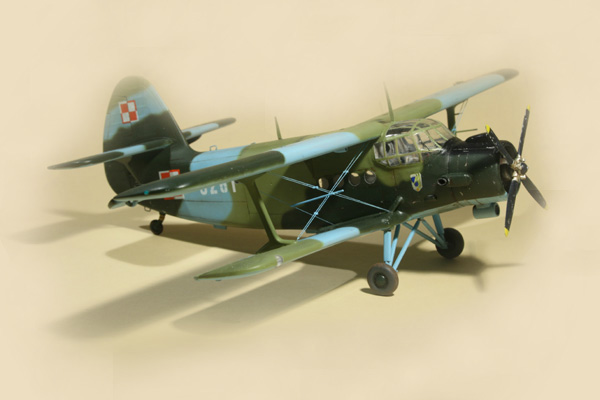
The prototype took flight in 1947, built to the specification of the
Russian misnistry of agriculture. Rooted in the tradition of the VVS, it
inherited the nickname Kukuruznik from the venerable Po-2.
While the plane hardly saw any combat use, it's still in operation by
some former eastern block armies as light transport aircraft
The design is customized for operation in inhospitable areas (exploration in Siberia)
making it able to use worst quality air strips. The plane practically doesn't
stall, and it's STOL capabilities are only surpassed by German WWII Storch.
A number of additional systems like autonomous feed of tyre pressure and
shocks or on-board fuel pumps provide for independent operation.
Another interesting technical feature are the advanced for their time,
monocoque wing struts.
In the sixties the production of this plane was also located in Poland, and later
in China. The plane was maunfactured till 1992. In western countries the An-2 is
frequently operated by "nostalgy" or "adventure" airlines, or parachuting clubs.
The kit:
Built from the Trumpeter 1/72 scale kit, which is a re-use of the old Czech Bilek kit.
To put it plain: the engineering is rather poor, more what the "artist" imagined the
plane to be, than what it should look in scale. To mention just the chunky windows, hopeless
prop hub or the canyon-deep imprints of canvass stretched between the wing ribs.
On the other hand, the quality is good, with little flash or mold offset. And the kit
is cheap, which helps, in case you need to get a new one due to unsuccessful rough surgery.
In the box are three trees molded in gray styrene, and some clear parts which are useless.
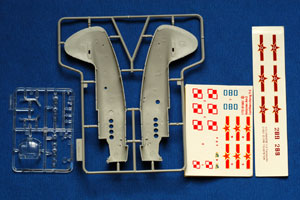
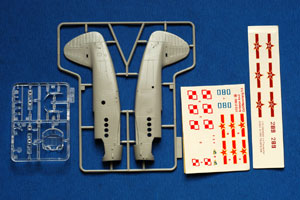
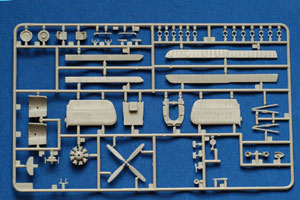
I "pimped up" my kit with a Pavla set including a vacu-form canopy and the small Eduard
PE-set. The canopy was quite inaccurate (warped or so), and was a major pain to install.
The resin cockipt also didn't convince. The Eduard set was quite good, and recommended
for this kit. Better yet: the large Eduard PE set, with a full cockipt, and a PE canopy,
which can be then paned with clear dope-lacquer, as seen on www.ffmc.de/
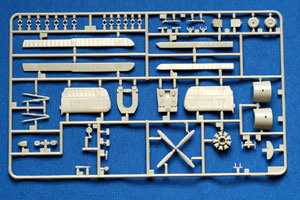
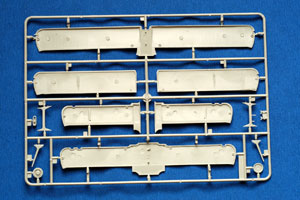
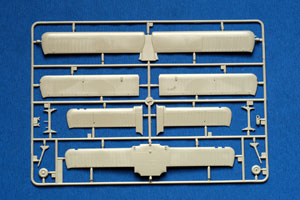
The decals are also a story for itself: The Chinese are availabe twice: a new sheet, with
Chinese only, and an old one which has the old Chinese and as well, the Polish one. Obviously,
the old decals were so bad (thick and unpliable - MicroSol wouldn't help - maybe Nitro
solvent would?), that Trumpeter thought it necessary to add new ones. But of course only
the Chinese ones. Who on earth would build the Polish version?! - well, me...
The construction:
As I wanted to open the door and use some really clear parts, I deided to build the interior.
It was scratch built from instant soup cups, stretched sprue and an old Visa card. In addition
The resin/PE cockpit was added. With plenty of putty the fuselage was closed, and with even
more filling and sanding the vacu canopy fitted.
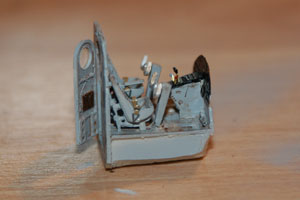
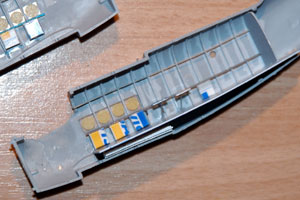
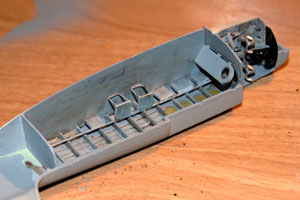
A few layers of Mr. Surfacer gave the right effect. In order to fix the tensioning lines, I
drilled through the wings, and put the threads through the hole for the landing gear leg.
To get the tension, I attached clothes-pins to the ends, and fixed the lines with superglue.
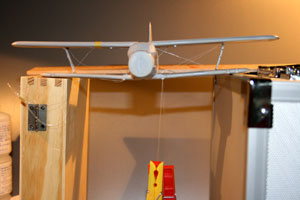
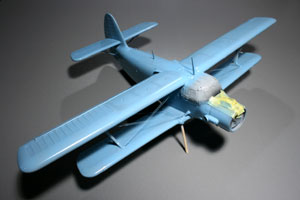
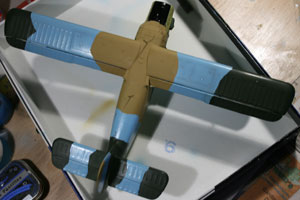
I used Tamiya acrylic paints. Trumpeter references Gunze, but the old Enamel. I don't know
if you can get these paints anymore at all, but it was hard enough to get a reference to
any other manufacturer. In the end all I could rely on was the I.J.N green. The "sand"-hue
looks more like drab on pictures of real airplanes, the recommended blue was also strange.
Well, I ended up mixing my own shades, for the last two.
The model got some black pre-shading, then an overall light blue coat. Should I ever own
an An-2, it will be definitely painted in light blue ;-)
I tried to mask the camo fields with Maskol, which ended in a disaster, as Maskol pulled
out from underneath the paint, leaving ugly chips. On top of that, the cross-referenced
sand-color turned more into pink, so I just decided to re-do the whole deal free hand...

The prop on the kit was so simplified, that I had to pratically re-do it completely. The hub
shape was wrong, and the blade pitch mechanism not even hinted at. I scratch-built new most of it.
Why model this plane?
I like this plane in its archaic apperance - square, robust and mundane - yet captivating
The interesting camo pattern also caught my attention. As I wanted to build a plane with
some significant weathering, I thought this was the model of choice. Another advantage:
The plane is available in the local museum, in case it was necessary to look up some details.
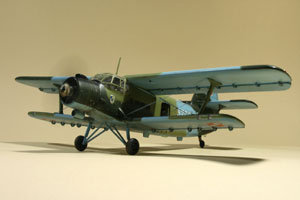
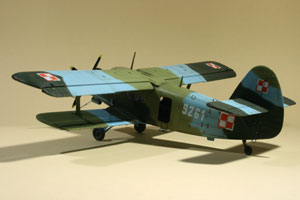
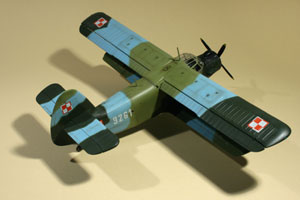
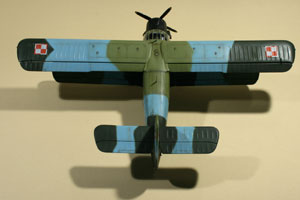
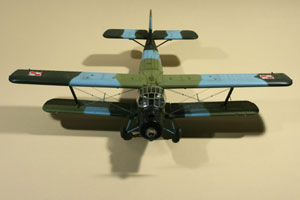
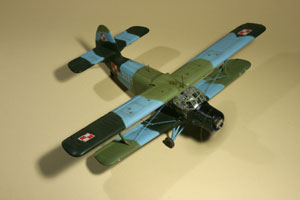
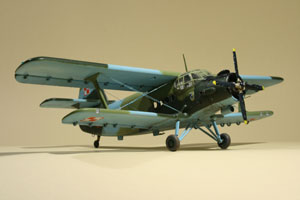
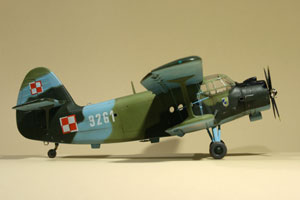
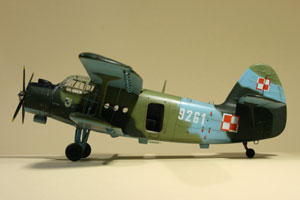
As the An-2 frequently lands on grass runways, my model had to have some extra dirt on the
bottom side. Realized with some artist oil in turpentine, chalks, but experimentally, also
using Mig-pigments concoction with plaster, acrylic flat paint and some wodka. ;-)
Produced fairly nice results, but it was a pity for the good spirit ;-)
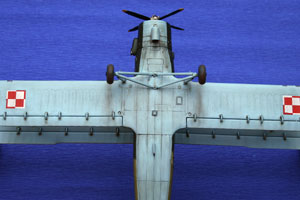
The Diorama
Since the cold war's over, and we're all friends now, the An-2s are flying formation withF-16s, what does the military do? Where's the spirit? Well, maybe you engage in some remote
skirmishes to keep the boys busy, and the spirits up. Or you just take the spirits in the
bottle. ;-) Since I did not serve with the red-and-white guys, but rather with the former
enemy, please don't take my small diorama for representative. All shown figures are purely
fictional. Obviously I can not extrapolate the bahaviour I have experienced in the Luftwaffe
as a post-cold-warrior to other military organisations - or can I ;-) ???
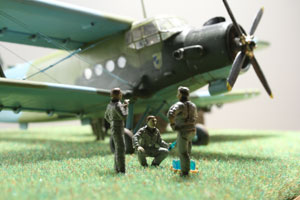
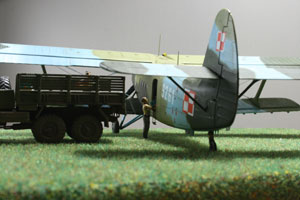
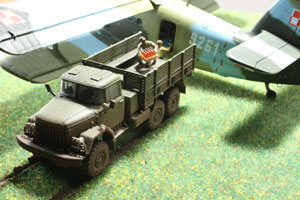
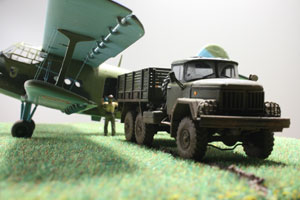
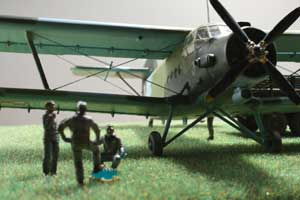
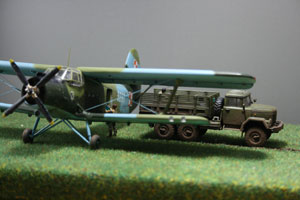
The diorama includes some ancient Italeri ground crew figures, which were made in polyethylene
and to which no paint adheres. The truck is an ICM ZIL-131 kit, which was actually a real pleasure
to build. In particular, as on ground vehicles all mishaps can be just plastered over with MIG dirt
glue. The bottles are from a Preiser HO railway equipment set.